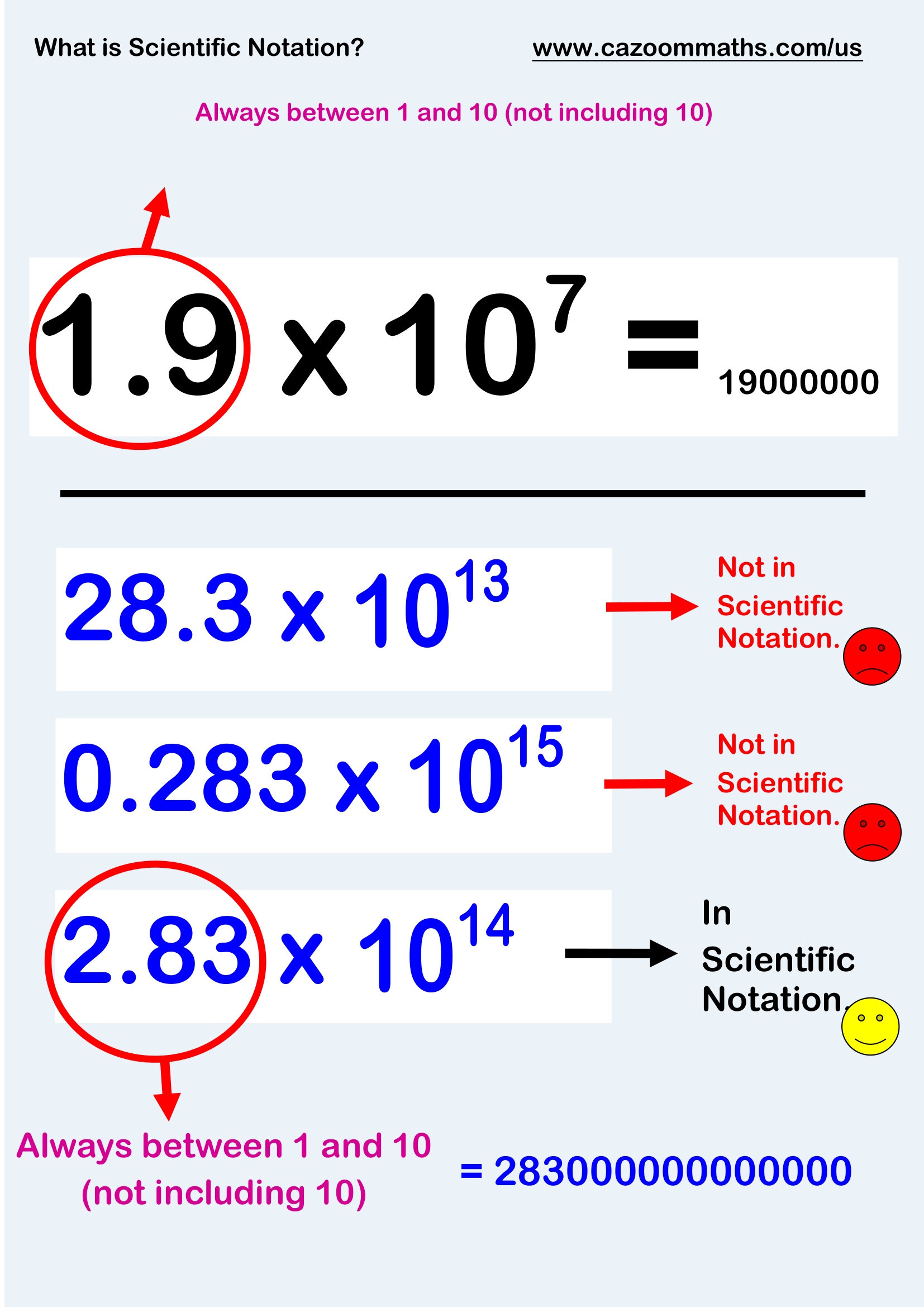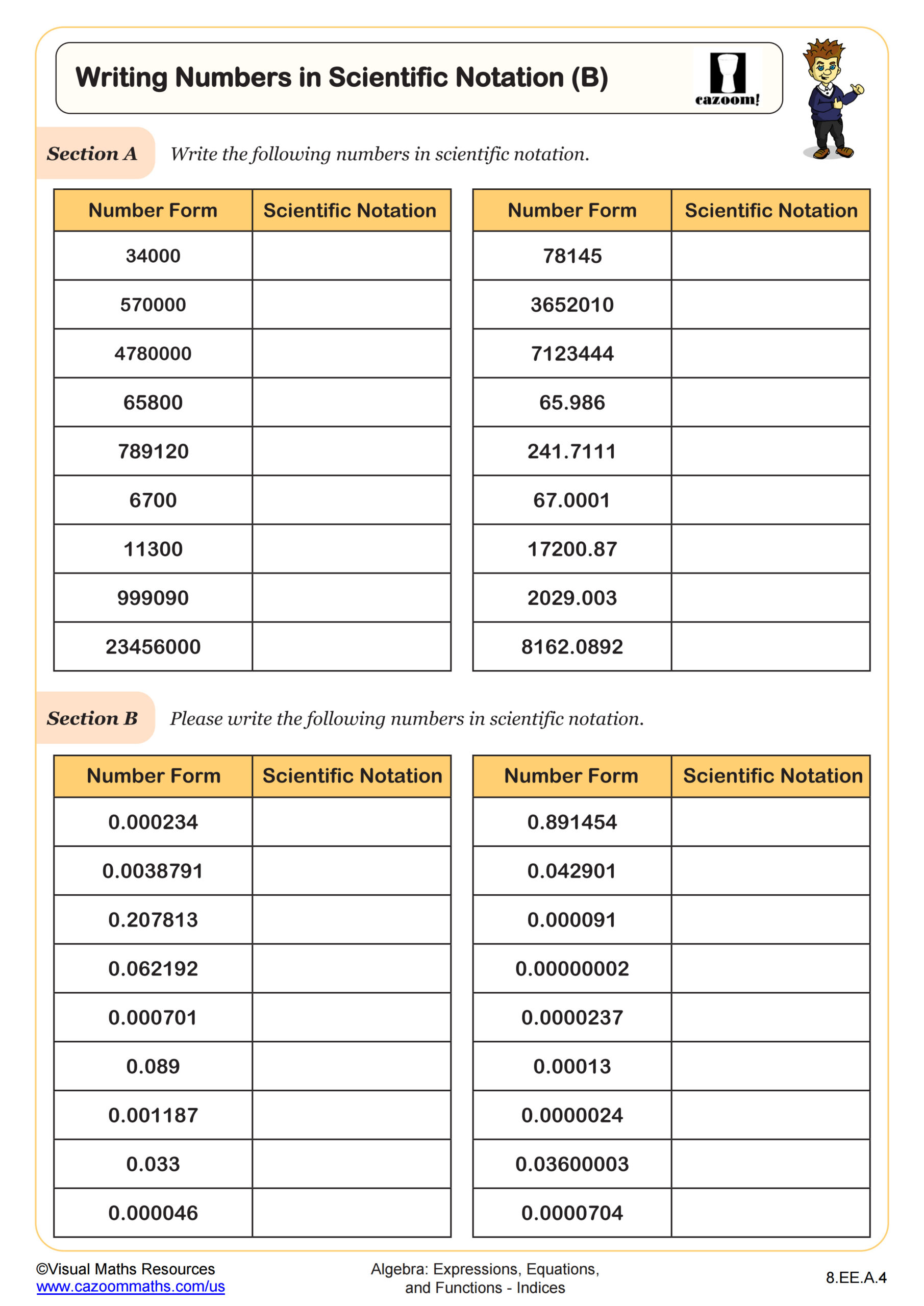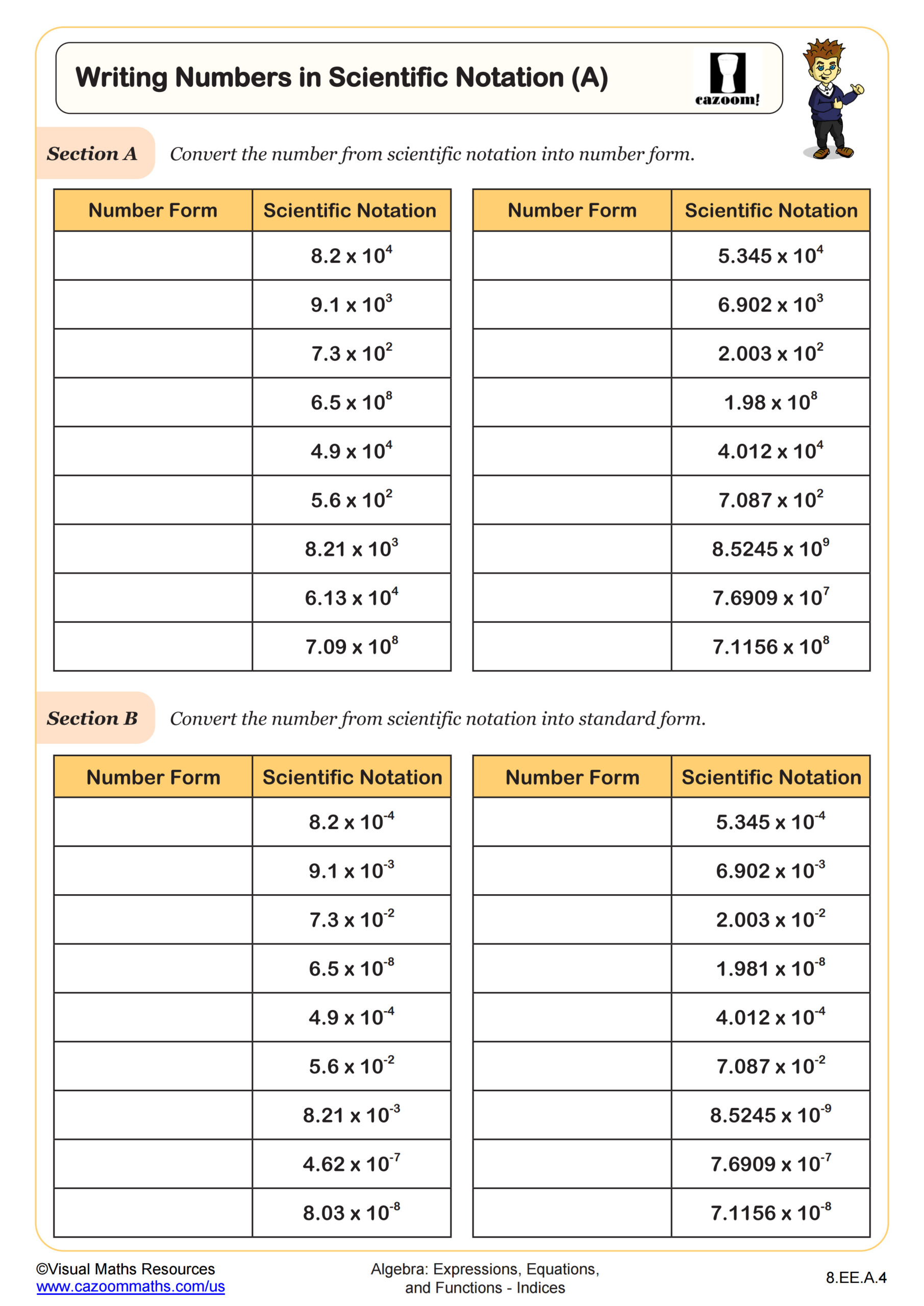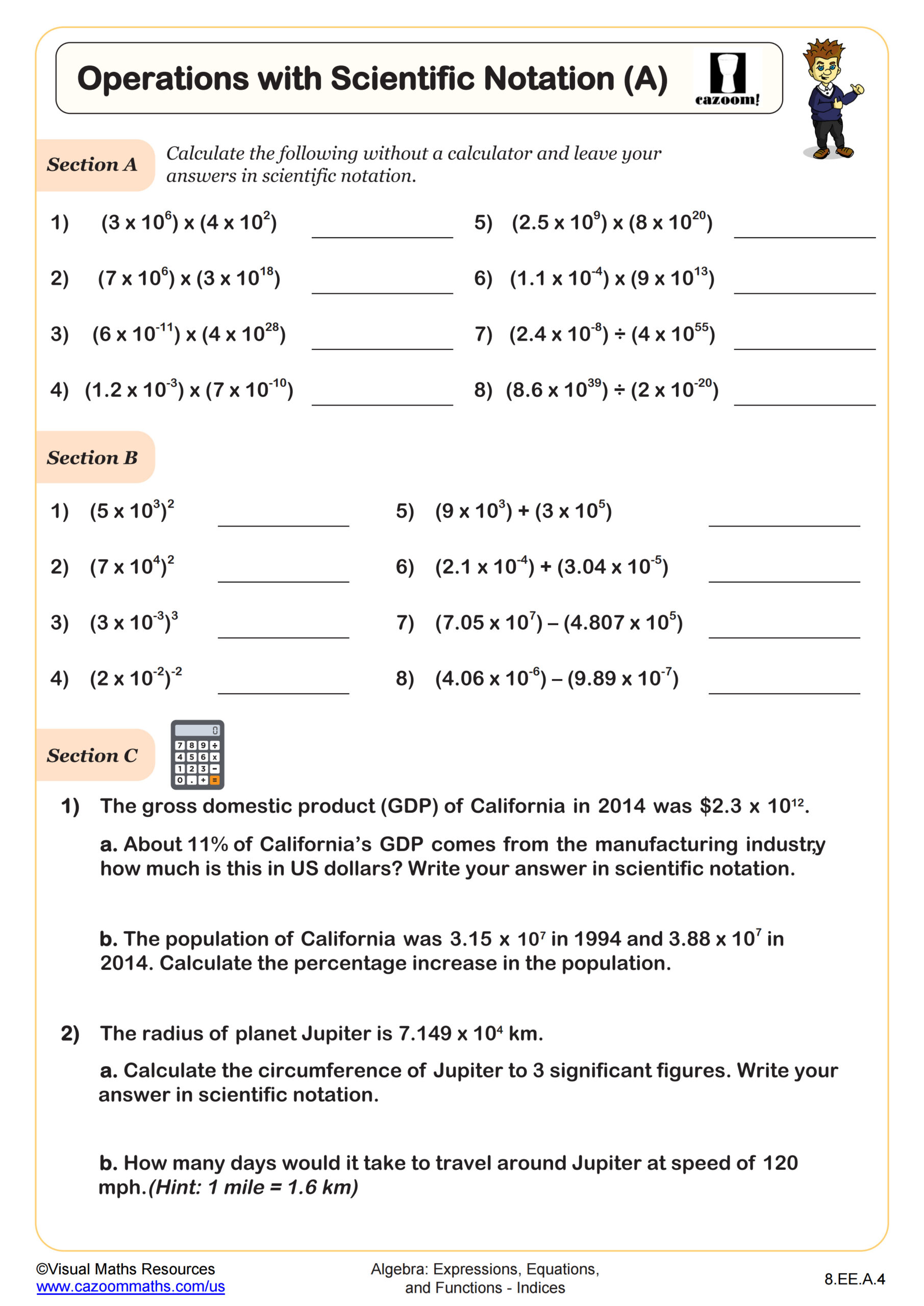What is Scientific Notation RESOURCE (FREE DOWNLOAD)
What is Scientific Notation RESOURCE DESCRIPTION
This document introduces scientific notation with examples of large numbers in Scientific Notation.

RELATED TO What is Scientific Notation
What is Scientific Notation
What is the resource?
This PDF explains scientific notation, designed for secondary students being introduced to this way of handling huge and tiny numbers.
Why is scientific notation important?
It has real-world applications where using long strings of zeros is clumsy and error-prone:
- Science work: Distances in space, or the size of cells, are all more manageable in scientific notation.
- Data calculations: Large populations and tiny rates of change in computers often default to this format.
- Measurement & comparison: Makes comparing vastly different quantities simpler, spotting relationships fast.
- Calculators: Understanding how 'that weird E thing' works is vital to interpreting their displays correctly.
Why is this resource helpful?
It presents a new concept via examples and breaks down steps, easing frustration:
- Why we bother: Shows a messy 'real' number alongside its tidy scientific notation, making the use case obvious.
- Clear conversion process: Doesn't assume prior knowledge, gives a 'count jumps' method students can master.
- Includes negative powers: Often seen as 'extra hard,' here they're just shown as the mirror for small values.
- Printable PDF: Ideal for giving every student the SAME reference as teachers provide more complex problems.
This makes scientific notation less intimidating. Students see it as a POWERFUL tool that tames math... motivating the practice needed for more advanced math and science topics.
Explore our extensive range of worksheets designed to help your students practice their skills. These resources, available in PDF format, cover a variety of math topics and are easy to download. Check them out here: Math Worksheets.



